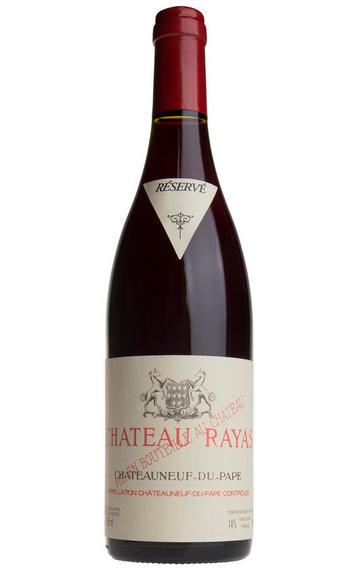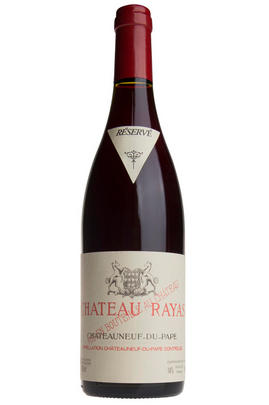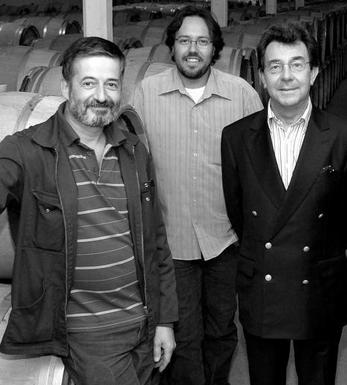
2003 Châteauneuf-du-Pape Rouge, Château Rayas, Rhône

Critics reviews
Robert M. Parker, Jr. - 23/02/2006
About this WINE

Château Rayas
Jacques Reynaud, who died in 1997, was one of the true characters in Châteauneuf. A notoriously shy and private man, he was known to avoid appointments by hiding in ditches that lined the rutted driveway leading to his château. However, he was recognised as one of the world's greatest winemakers and the legacy of Château Rayas is now continued by his son François.
So many practices here seem to run contrary to other producers in Châteauneuf - the 13 hectares of vines are north facing and contain none of the fabled "galets roulés". Only Grenache is used and yields at around 15hl/h are ridiculously low. Almost uniquely the wines are matured in the now rarely seen 450 litre "double-piéce" oak casks. These are substantial and exotically rich wines that are quite literally unique.

Châteauneuf-du-Pape
The most celebrated village of the Southern Rhône, Châteauneuf-du-Pape is the birthplace of the now indispensable French Appellation d’Origine Contrôlée system – imperfect though it may be. Compared to the Northern Rhône, the vineyards here are relatively flat and often feature the iconic galet pebbles – the precise benefits of which are a source of much debate. Minimum alcohol levels required by the AOC are the highest in France, but at 12.5% it is well below the natural generosity of Grenache, which only achieves its full aromatic potential when it is fully ripe and laden with the resultant high sugars. Syrah and Mourvèdre contribute the other defining elements in the blend, adding pepper, savoury spice and structure to the decadent Grenache. There are a further 10 permitted red grape varieties which can be used to adjust the “seasoning”. Of the five white varieties permitted, it is Grenache Noir’s sibling – predictably perhaps – Grenache Blanc, which dominates, though Roussanne shows a great deal of promise when handled well, notably at Château de Beaucastel.

Southern Rhône Blend
The vast majority of wines from the Southern Rhône are blends. There are 5 main black varieties, although others are used and the most famous wine of the region, Châteauneuf du Pape, can be made from as many as 13 different varieties. Grenache is the most important grape in the southern Rhône - it contributes alcohol, warmth and gentle juicy fruit and is an ideal base wine in the blend. Plantings of Syrah in the southern Rhône have risen dramatically in the last decade and it is an increasingly important component in blends. It rarely attains the heights that it does in the North but adds colour, backbone, tannins and soft ripe fruit to the blend.
The much-maligned Carignan has been on the retreat recently but is still included in many blends - the best old vines can add colour, body and spicy fruits. Cinsault is also backtracking but, if yields are restricted, can produce moderately well-coloured wines adding pleasant-light fruit to red and rosé blends. Finally, Mourvèdre, a grape from Bandol on the Mediterranean coast, has recently become an increasingly significant component of Southern Rhône blends - it often struggles to ripen fully but can add acidity, ripe spicy berry fruits and hints of tobacco to blends.


Buying options
Add to wishlist
Description
The 2003 Rayas Chateauneuf du Pape has gone from strength to strength and now looks to be the finest vintage since the monumental 1995. Deep ruby to the rim with that classic Rayas nose of flowers, kirsch liqueur, black raspberries, crushed rocks, and minerals, the wine is dense and concentrated, with a broad, savory mouthfeel, sweet yet silky tannin, fabulous persistence, and a blockbuster finish that just goes on and on. This is a reassuringly profound Rayas that seems to suggest that Emmanuel Reynaud has finally figured out this cold-climate terroir in a warm climate appellation. This wine should be given 3-4 years of bottle age, and drunk over the following 20+ years.
Robert M. Parker, Jr. - 23/02/2006
wine at a glance
Delivery and quality guarantee